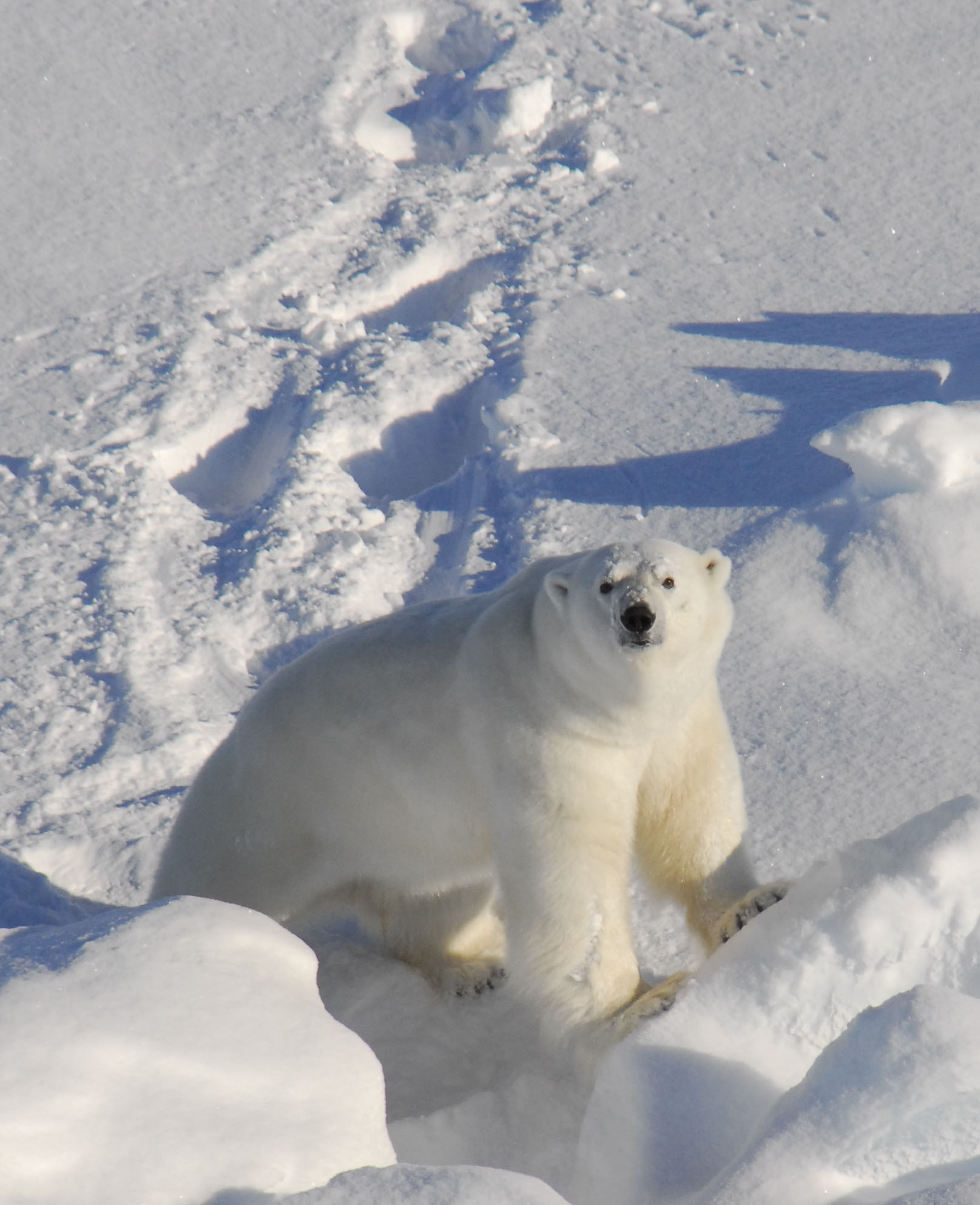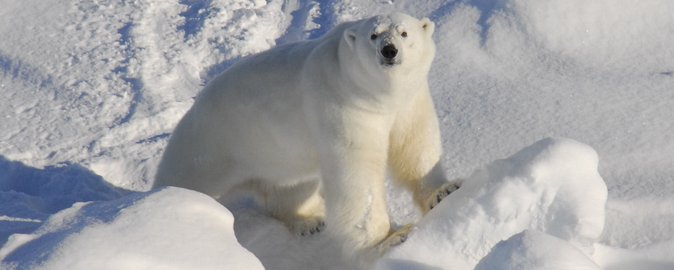From brown to white – evolution of the polar bear
Genetic research reveals when the polar bear became an independent species and provides important hints to understand cardiovascular diseases


The polar bear has evolved over time from the common brown bear by changing its fur colour to white, the ideal colour to blend in with its ice-covered surroundings. With new data an international research team now documents that the separation from the brown bear into an independent species has gone very quickly.
“We compared genes between brown and white bears and were surprised. First and foremost, the polar bear as a species is less than 480,000 years old. It is thus significantly younger than previously thought,” says Professor Rune Dietz from the Arctic Research Centre, Department of Bioscience, Aarhus University.
The researchers believe that the brown bear migrated to the north during a warmer climate period and when a cold period subsequently set in, a group of brown bears may have become isolated and therefore forced to quickly adapt to the new colder conditions.
The comprehensive research project involved participants from China, the USA, Greenland and Denmark. The sensational findings are published on 8 May in the recognised journal CELL whose front page features a photo from the article.
The ‘bad’ cholesterol
The researchers also show that the polar bear has developed the capabilities to live in the Arctic during just a couple of hundred thousand years – and this is a very fast evolution.
Just as changes in the genes have led to changes in the fur colour from brown to white, a natural selection has led to changes in the genes that regulate the transport of fat in the blood and the breakdown of fat in the body.
When the researchers compare the gene set from polar bears with that of humans, changes in the apoB gene are prominently evident. It is the gene that in mammals codes for the most important protein in LDL (low density lipoprotein), commonly known as ‘bad’ cholesterol.
This is a very important adaptation to life in the high-Arctic regions where the polar bears mainly survive on a blubber-rich diet from marine mammals on the sea ice. Despite the almost exclusively fat-dominated diet of polar bears, there are no fatty deposits in their arteries and they thereby avoid cardiovascular diseases.
“Changes or mutations in this particular gene can be decisive for the fact that the polar bear can cope with high amounts of in particular cholesterol, fat and sugar in the blood,” explains professor and veterinarian Christian Sonne at the Arctic Research Centre, Department of Bioscience, Aarhus University.
The researchers believe that a new study programme can reveal how active these genes really are in polar bears and whether they lead to production of proteins and enzymes in the cells, counteracting the development of, among other things, cardiovascular diseases. Such knowledge can help reveal how humans can be protected against the life-threatening diseases that affect more and more people as a result of a fat-rich diet.
Warmer weather
Professor Rune Dietz, Aarhus University and Erik Born, the Greenland Institute of Natural Resources in Nuuk, has collected tissue and blood samples from polar bears for more than 30 years and this has resulted in an invaluable treasure trove of data.
Genetic studies of the comprehensive material can be compared with climate data from the same period and thus reveal during which periods the polar bear populations have been under pressure from, among other factors, the climate and during which periods the populations have had ideal conditions.
“It allows us to predict how the polar bear will survive through the next centuries where the current climate change will bring warmer weather,” says Rune Dietz.
The study comprised blood and tissue samples from 79 Greenland polar bears and 10 brown bears from Sweden, Finland, Glacier National Park in Alaska and the Admiralty, Baranof and Chichagof (ABC) islands off the coast from Alaska The analyses were undertaken in a collaboration between Aarhus University, University of Copenhagen, the Greenland Institute of Natural Resources in Nuuk, Beijing Institute of Genetics, China, and University of California, Berkeley, USA. Main author of the article is Postdoc Eline Lorentzen, Centre for GeoGenetics, the Natural History Museum, University of Copenhagen, who was in charge of the comprehensive coordination of the activities behind the article.
Read the article here: http://www.cell.com/cell/abstract/S0092-8674(14)00488-7
Other links:
- http://www.b.dk/nationalt/isbjoernens-hemmelighed-afsloeret (Danish)
- https://www.sciencedirect.com/science/article/pii/S0092867414004887?via
Further information: Professor Rune Dietz, rdi@dmu.dk, tel.:+45 2125 4035; Professor Christian Sonne, csh@dmu.dk, tel.: +45 3078 3172; Postdoc Eline Lorentzen (presently University of California, Berkely), elinelorenzen@gmail.com, tel.: +1 510 229 9056.
